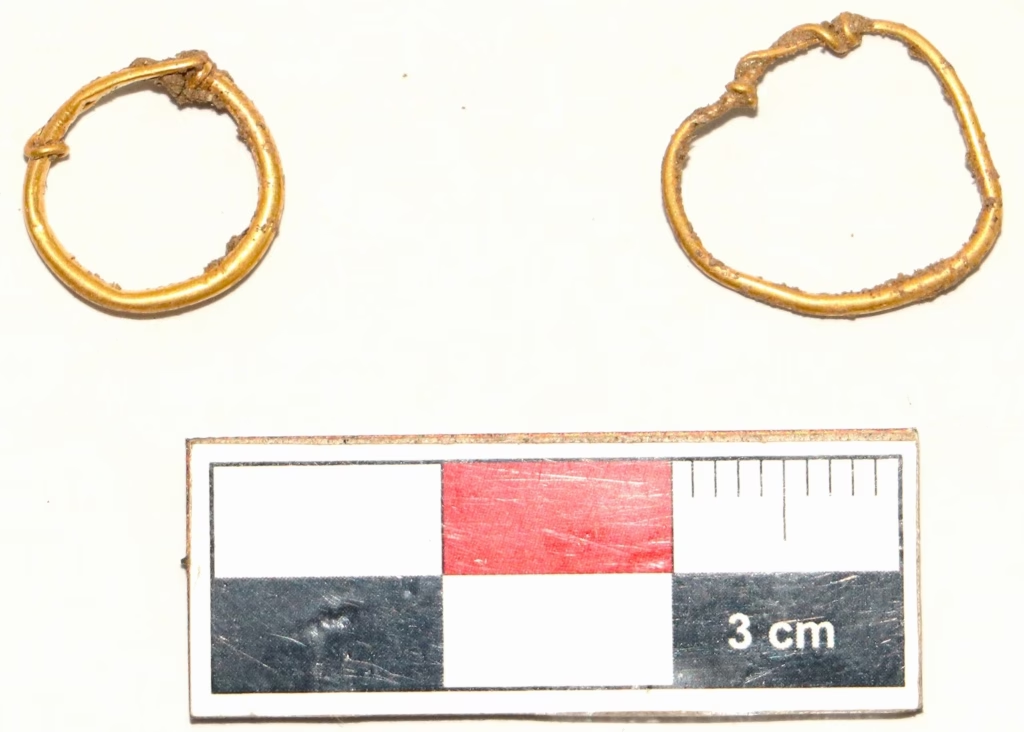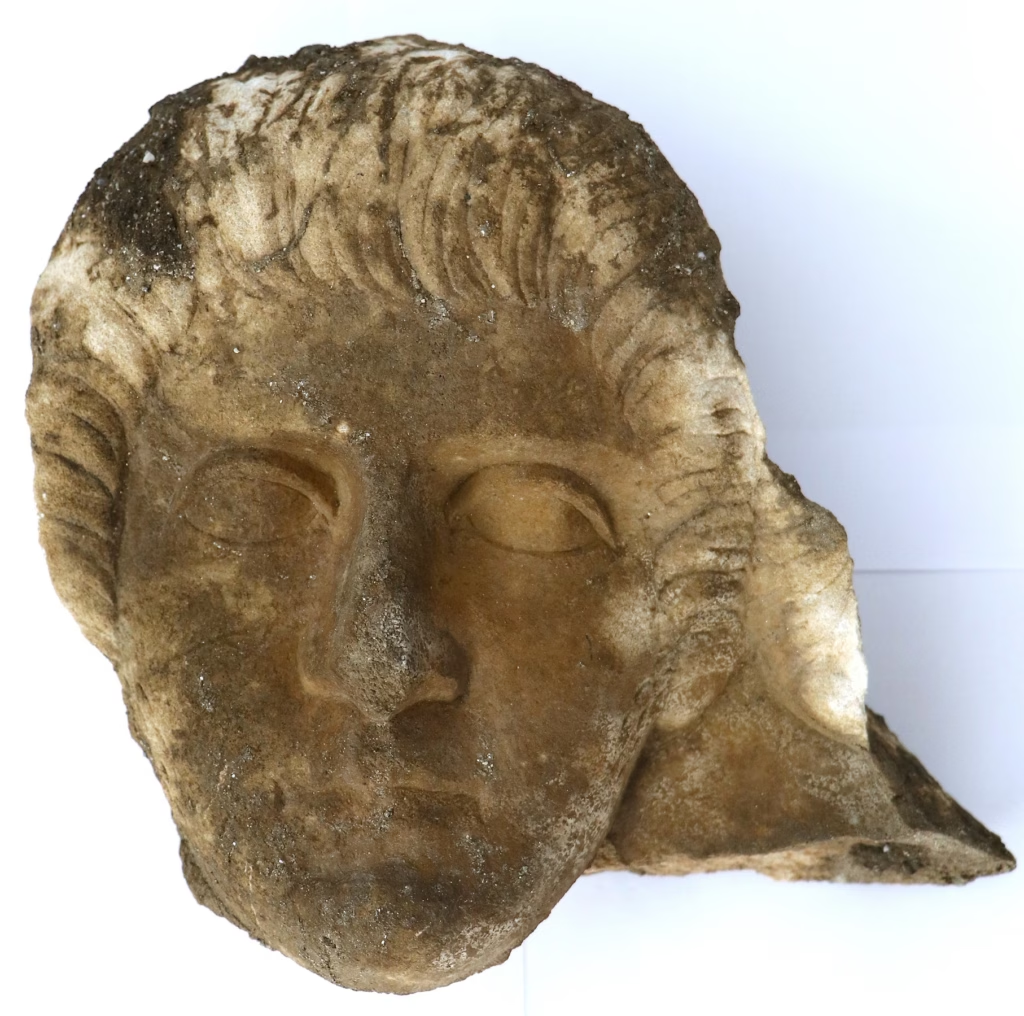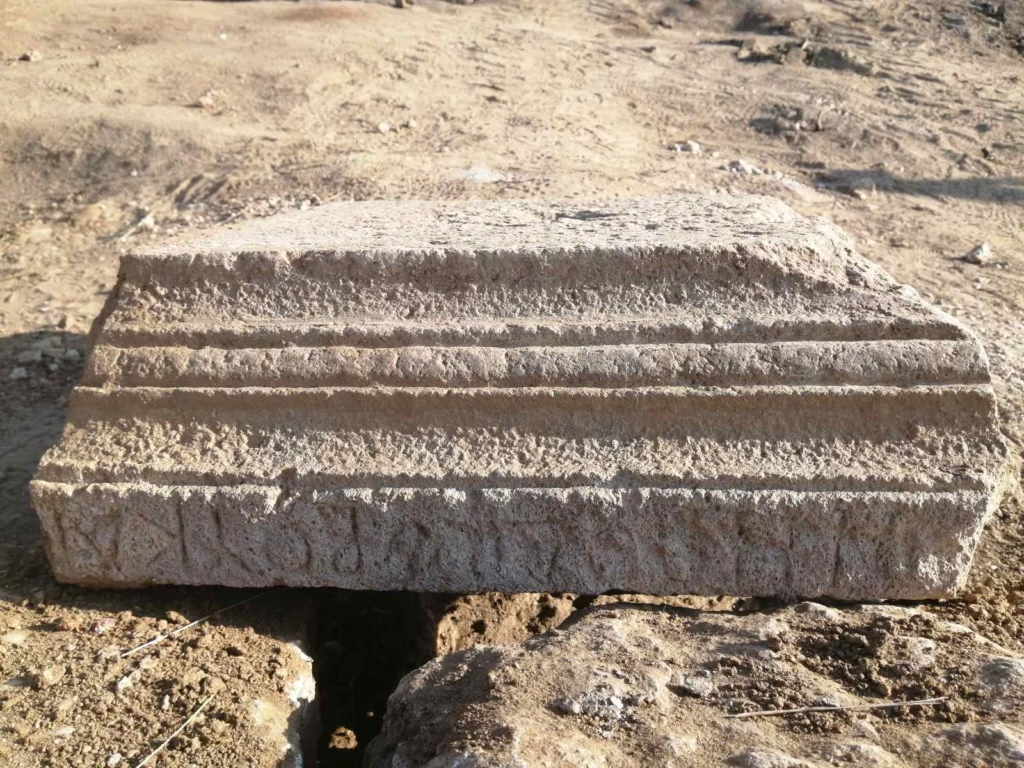Near the village of Rupite in southwestern Bulgaria, archaeologists conducting rescue excavations at the Heracleia Syntica necropolis have uncovered burial goods and the first-ever funerary inscription dating back 2,500 years. These remarkable finds shed new light on the ancient city’s cultural richness and burial traditions.
Double Tomb with Golden Hoops and Bronze Treasures from the 4th Century BC
Among the most significant discoveries is a double tomb containing the remains of a man and a woman dating to the 4th century BC. The tomb contained exquisite grave goods including gold hoop earrings, a bronze bulla (amulet case), bronze coins, clay lamps, and intact glass vessels. The quality and quantity of these objects suggest the high social status of the deceased.
Archaeologists note that these finds confirm Heracleia Syntica was still flourishing before a devastating earthquake struck in 388 AD.

Looted Graves and Hidden Treasures
Many tombs had been looted in antiquity, but some graves remained protected by later constructions. For example, a child’s grave contained 18 bronze coins, three terracotta figurines around the head, and a clay lamp at the feet, indicating the family’s wealth and the meticulous care in burial customs.

First-Ever Inscription Found: “Tomb of Herodore and…”
For the first time at this site, archaeologists uncovered a Greek funerary inscription carved on a large stone slab that reads:
“Tomb of Herodore and…”
The second name likely refers to his wife or a close relative. The stone was later reused as a grave cover, so its original placement remains unknown.

A Cultural Crossroads from Thracian to Roman Influence
The finds highlight the necropolis as a cultural melting pot where Thracian, Hellenistic, Celtic, and Roman influences merged. A finely carved funerary relief and glass vessels reflect the artistic and ritual practices of the period.
Why This Discovery Matters
- 2500-year-old burial goods illuminate the region’s ancient history.
- The first funerary inscription at the necropolis adds valuable written evidence.
- Artifacts demonstrate the blend of multiple ancient cultures in one site.
The excavation team is now preparing radiocarbon dating and stable isotope analyses on the osteological remains to uncover the origins, diets, and health of those buried in this ancient necropolis.





